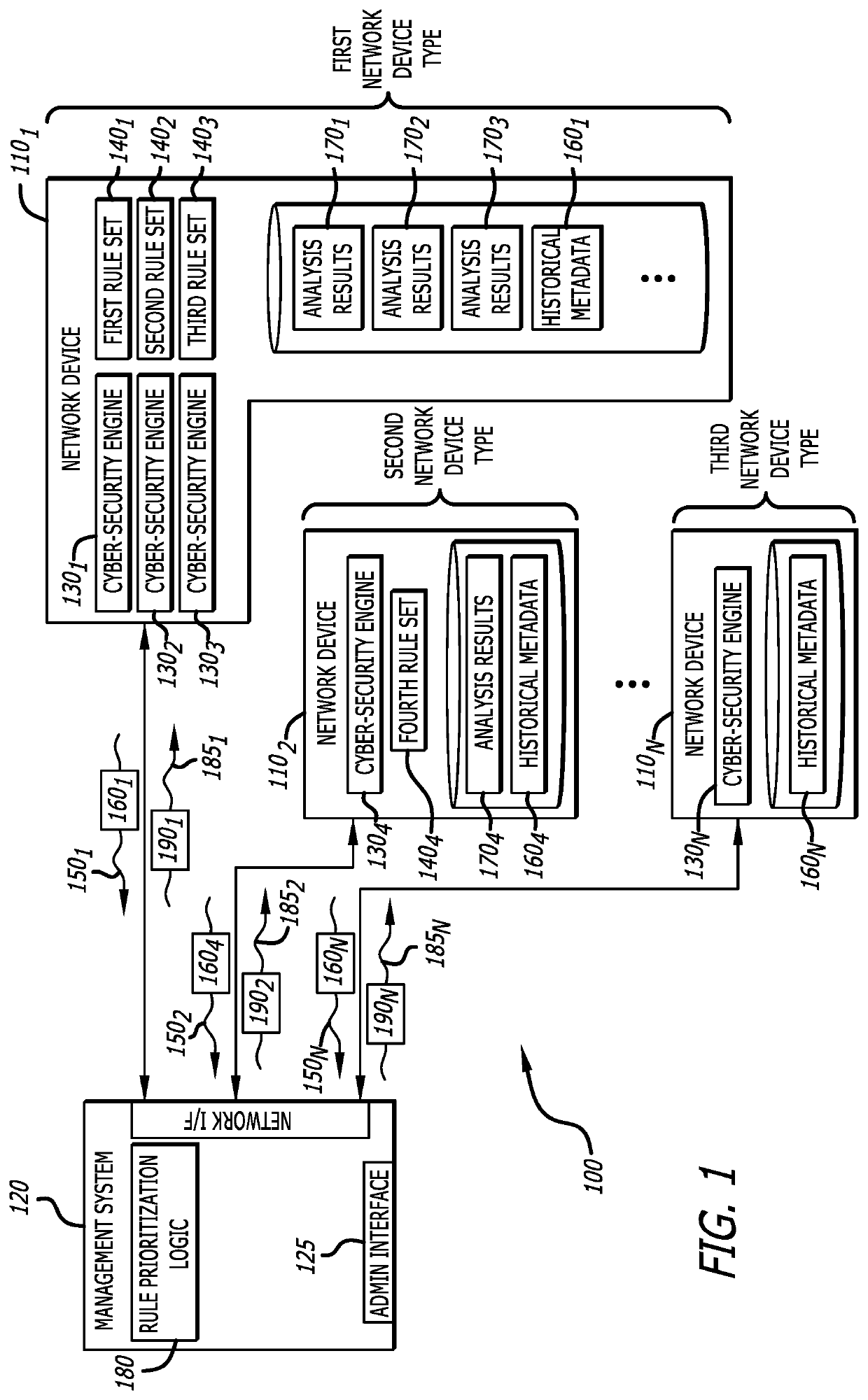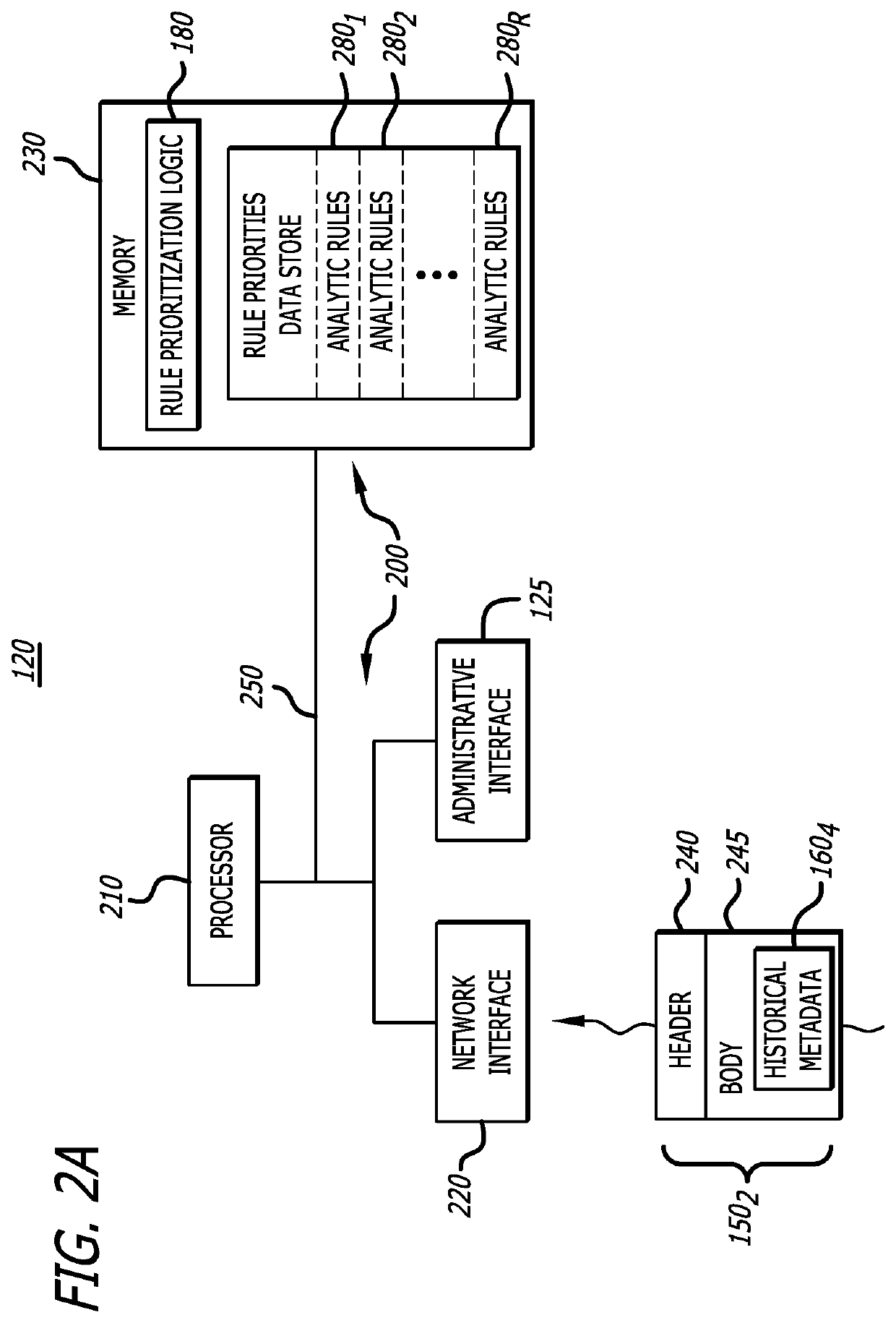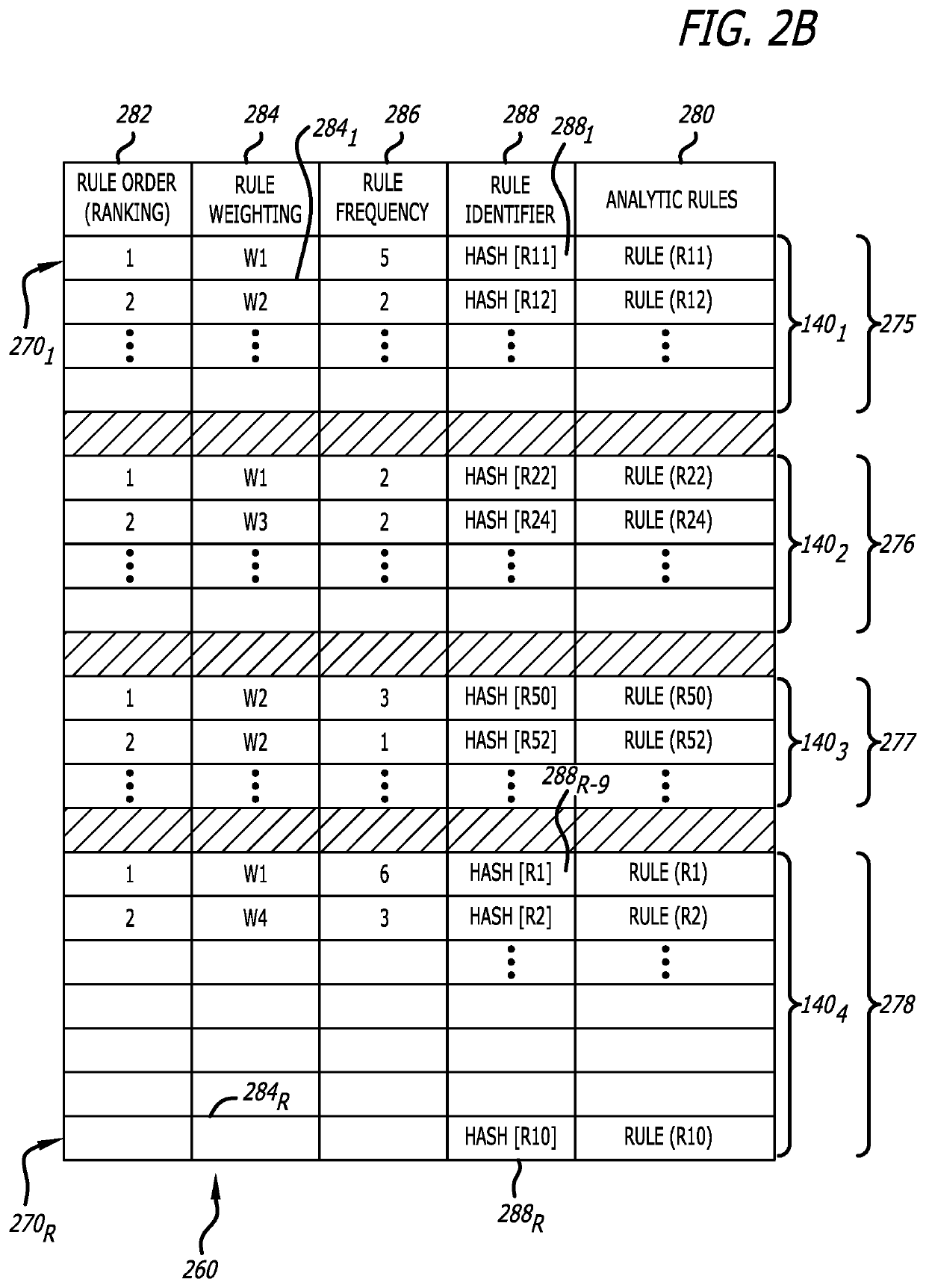System and method for automatically prioritizing rules for cyber-threat detection and mitigation
a technology of automatic prioritization and cyber-threat detection, applied in the direction of multi-programming arrangements, electrical appliances, resource allocation, etc., can solve the problems of inability to account for recent, real-time findings encountered in threat detection analysis, and inability to detect threats in real-time, and avoid unauthorized actions
- Summary
- Abstract
- Description
- Claims
- Application Information
AI Technical Summary
Benefits of technology
Problems solved by technology
Method used
Image
Examples
Embodiment Construction
I. Overview
[0019]A cyber-security system to dynamically reprioritize the utilization of analytic rules forming a rule set with improved efficacy in identifying malicious or non-malicious content and / or improved efficiency in identifying or classifying malicious or non-malicious content is described. Herein, the analytic rules may include detection rules that control operability of threat analysis logic, represented by various types of rule-based cyber-security engines, in (i) detecting one or more indicators of compromise (IOCs) and / or (ii) classifying an object under analysis as malicious (e.g., the likelihood of the object being part of a cyberattack exceeds a first threshold such as a first probability or initial behavioral trigger) or non-malicious (e.g., the likelihood of the object being part of a cyberattack is less than a second threshold such as a second probability that is less than the first probability). The detection rules may be utilized by rule-based cyber-security en...
PUM
 Login to View More
Login to View More Abstract
Description
Claims
Application Information
 Login to View More
Login to View More - R&D
- Intellectual Property
- Life Sciences
- Materials
- Tech Scout
- Unparalleled Data Quality
- Higher Quality Content
- 60% Fewer Hallucinations
Browse by: Latest US Patents, China's latest patents, Technical Efficacy Thesaurus, Application Domain, Technology Topic, Popular Technical Reports.
© 2025 PatSnap. All rights reserved.Legal|Privacy policy|Modern Slavery Act Transparency Statement|Sitemap|About US| Contact US: help@patsnap.com



